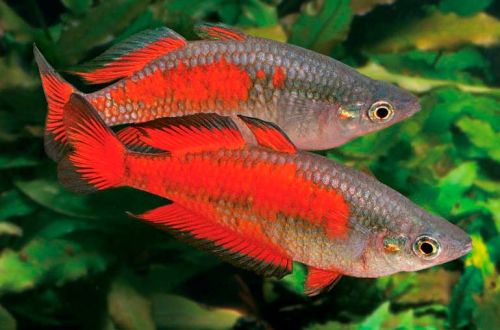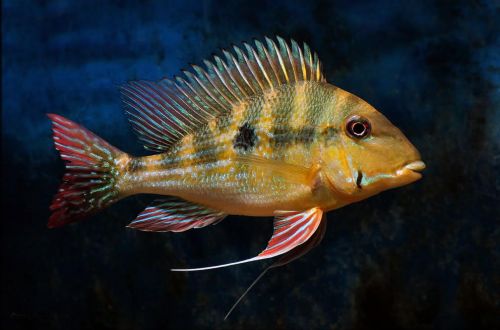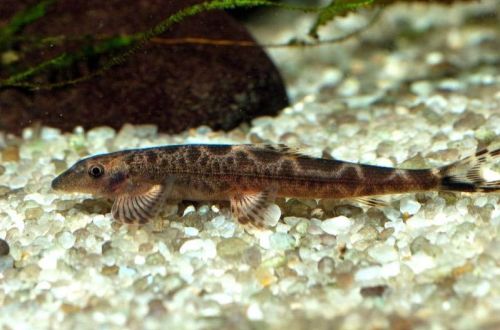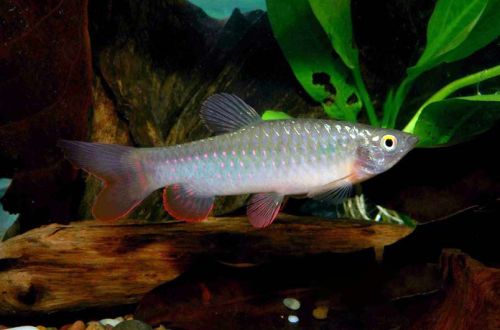
Parkinson’s iris
Parkinson’s iris, scientific name Melanotaenia parkinsoni, belongs to the family Melanotaeniidae (Rainbows). The fish comes from the island of New Guinea. The natural habitat is limited to the southeastern tip of the island. Inhabits shallow rivers and streams flowing among tropical forests.

Contents
Description
Adult individuals reach a length of about 11 cm. The fish are characterized by sexual dimorphism, which manifests itself in a color difference. Males look brighter, thanks to the red-orange pigment unevenly covering half of the body from the side of the tail. Less common are fish with a yellowish color.
Females are monochromatic with dominant gray or silver hues. Juveniles look similar, colors appear only as they grow older. In both sexes, rows of stripes may be visible along the lateral line.
Behavior and Compatibility
Peace-loving mobile fish that needs the company of relatives. It is recommended to purchase a flock of 6-8 individuals. Males compete with each other for the attention of females, but it does not come to serious injuries.
Compatible with many other non-aggressive fish species. However, sluggish and shy tankmates may experience stress due to the excessive mobility of Rainbows.
Brief information:
- The volume of the aquarium – from 140 liters.
- Temperature – 26-30°C
- Value pH — 7.5–7.8
- Water hardness – medium and high hardness (8-16 dGH)
- Substrate type – any
- Lighting – moderate, bright
- Brackish water – no
- Water movement – weak, moderate
- The size of the fish is about 11 cm.
- Food – any food
- Temperament – peaceful
- Keeping in a flock of 6-8 individuals
Maintenance and care, arrangement of the aquarium
The optimal size of the aquarium for a group of 6-8 fish starts from 140-150 liters. Being active swimmers, for Parkinson’s Rainbows, the width of the tank is more important than its height, and the design must provide for large free areas for swimming. Do not allow excessive growth of aquatic plants.
They can jump out of the aquarium, for this reason, the presence of a lid is welcome.
The fish successfully adapt to various conditions, however, an environment with high GH and pH values uXNUMXbuXNUMXbis considered comfortable. They prefer high water temperatures, while ensuring a sufficient content of dissolved oxygen.
Food
Omnivorous species. Will accept popular dry, live and frozen foods such as mosquito and daphnia larvae. It is noted that the fish can feed on duckweed.
Breeding / breeding
Fish do not require special conditions for reproduction. In a healthy aquarium they spawn throughout the year. However, breeding is complicated by the fact that spawning can last from one day to several weeks. Parkinson’s irises do not show parental care, therefore, in order to avoid predation by adult fish, eggs should be moved to a separate tank in a timely manner.
The incubation period depends on the temperature. At 28°C it is 8–10 days. The first few hours after the appearance of the fry are in place and only then they begin to swim in search of food. The first food can be ciliates, or special suspensions for feeding juveniles. As they grow older, they will begin to accept powdered feed, Artemia nauplii, etc.





